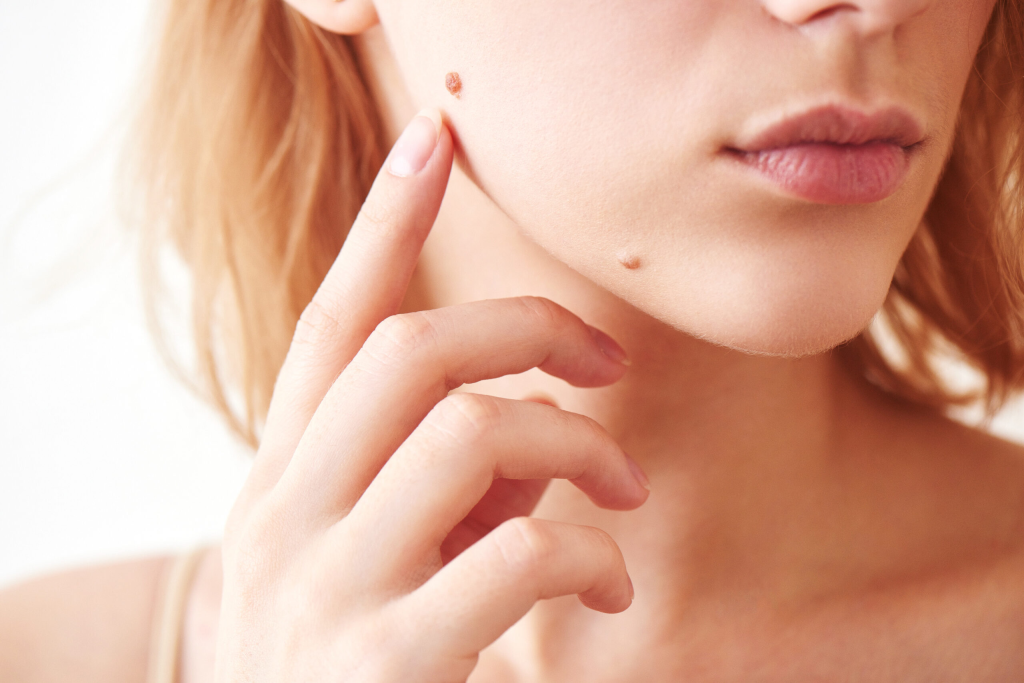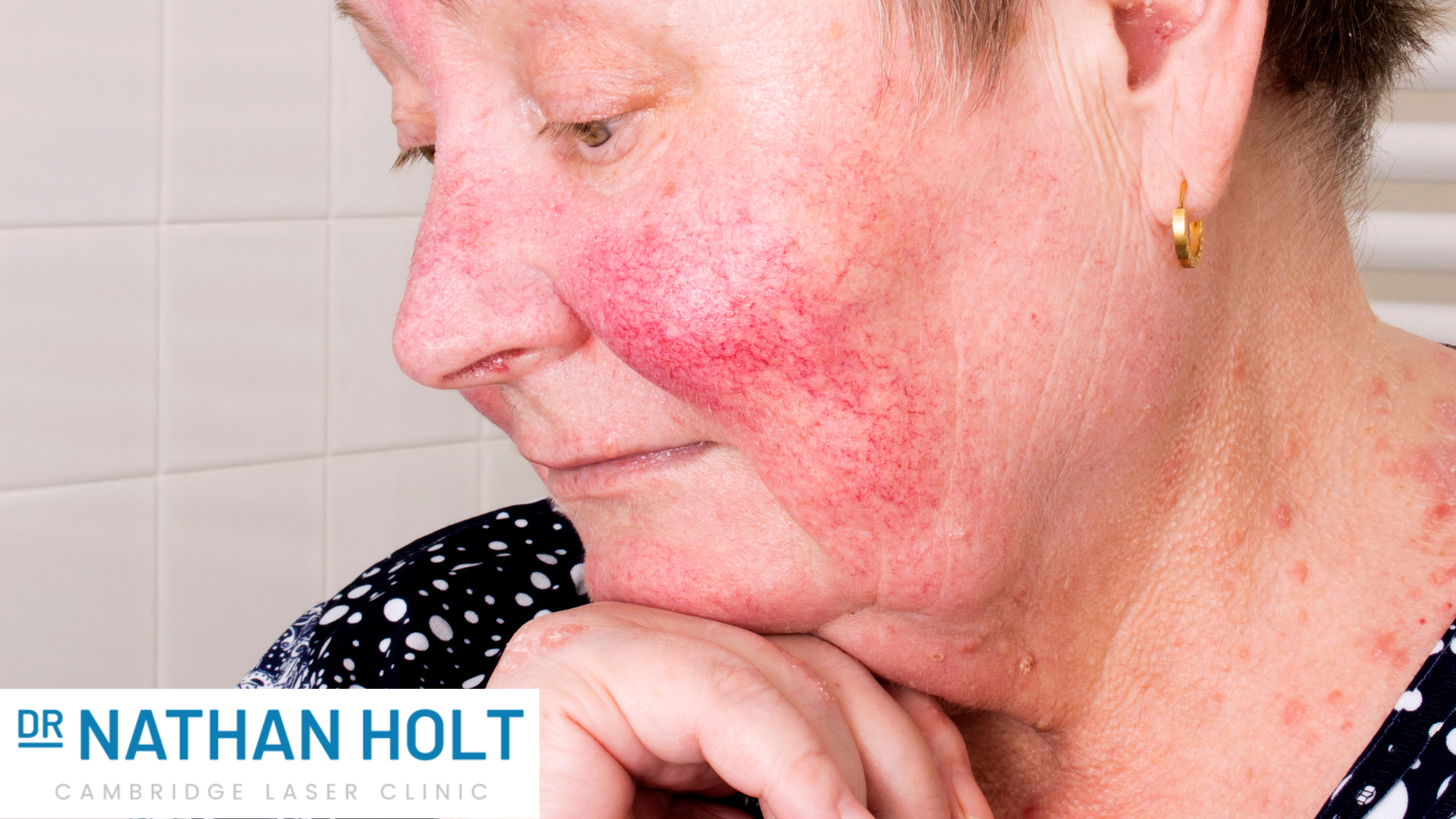April marked Rosacea Awareness Month, a time dedicated to spreading awareness about this chronic skin…

Understanding Warts and Verrucae: Causes, Prevention and Non-Surgical Treatments
Maintaining healthy skin is something we all try our best to do, through a combination of good hygiene, positive lifestyle choices and the use of high-quality topicals. But despite our best efforts, there are countless common skin complaints that appear out of the blue, seemingly for no reason at all.
Two examples of these are warts and verrucae – skin complaints that are every bit as maligned as they are misunderstood.
What are Warts and Verrucae?
Warts and verrucae are skin growths caused by a virus called the human papillomavirus (HPV). Warts can appear on various parts of the body, while verrucae are specific to the soles of the feet. They are both benign in nature (non-cancerous) and are usually harmless, though can be unsightly and uncomfortable.
Warts are small, rough bumps that typically appear on the hands, fingers, face and other areas. They can be skin-coloured, pink or brown. Verrucae – also known as plantar warts – manifest exclusively on the soles of the feet. They are typically flatter and can be surrounded by a thickened outer layer of skin due to pressure from walking.
Both warts and verrucae can spread from person to person (or to different parts of the body) through direct contact, highlighting the importance of proactive prevention.
Risk Factors for Warts and Verrucae
Research has uncovered several known risk factors for warts and verrucae, which can make a person more likely to develop these unsightly imperfections. Examples of these include:
- Direct Contact with Infected Skin: Warts and verrucae are caused by the human papillomavirus (HPV), which spreads through direct skin-to-skin contact with an infected person.
- Damaged or Moist Skin: Cracks, cuts, or moist skin provide entry points for the HPV virus. When your skin is compromised due to factors like excessive moisture or minor injuries, it becomes more susceptible to HPV infection.
- Public Areas and Communal Spaces: Places like swimming pools and communal showers can harbour the virus. Walking in bare feet in these areas increases the risk of coming into contact with HPV and developing warts or verrucae.
- Weakened Immune System: A weakened immune system can make it difficult for your body to combat the virus effectively, making you more prone to developing warts and verrucae.
- Age and Genetics: Children and young adults are more susceptible to warts and verrucae, as their immune systems are still developing. Some people may also have a genetic predisposition to HPV infections.
- Nail Biting and Skin Picking: Biting your nails or picking at your skin can create small openings through which the virus can enter, increasing the likelihood of developing warts around your nails or fingers.
- Personal Hygiene Habits: Poor hygiene can contribute to the spread of warts and verrucae. Regular handwashing and keeping your skin clean can reduce the risk of infection.
- Occupational Exposure: Certain professions, like healthcare or jobs that involve close contact with others, might increase your risk of exposure to HPV.
- Sharing Personal Items: Sharing items like towels, razors, or shoes with an infected person can transfer the virus from one person to another.
- Excessive Moisture and Sweating: Areas of your body that are consistently moist due to excessive sweating can create an environment where the virus can thrive.
As the vast majority of these risk factors can be mitigated with small yet essential adjustments to everyday habits, it is possible to reduce the likelihood of contracting the HPV virus to the bare minimum.
Debunking Myths and Facts
As with many common skin complaints, the subject of warts and verrucae is rife with myths and misunderstandings. Some of these were comprehensively debunked decades ago, yet continue to persist even today.
Just a few examples of which are as follows:
- Myth 1: Warts are caused by handling frogs or toads.
Explanation: Warts are caused by human papillomavirus (HPV) – not by touching frogs or toads. HPV is a virus that enters the skin through tiny cuts or abrasions, leading to the development of warts.
- Myth 2: Verrucae can only be contracted from swimming pool areas.
Explanation: While it’s possible to contract verrucae in moist environments like swimming pool areas, they can also develop in other places. Verrucae are caused by the same HPV virus as warts and can spread through direct contact with infected skin, towels and other personal items.
- Myth 3: Cutting a wart will make it go away.
Explanation: Cutting or shaving a wart is not a good idea, as along with making the problem worse it can also lead to infection.
- Myth 4: Warts have “roots” that need to be removed for complete treatment.
Explanation: Contrary to popular belief, warts do not have roots. They affect only the top layer of the skin, which is why removing the visible part of the wart is usually sufficient for treatment.
- Myth 5: Warts are highly contagious through touch.
Explanation: While warts are contagious, they are not as easily spread through simple touch. Direct and prolonged contact with an infected area is needed to increase the risk of transmission.
- Myth 6: Over-the-counter remedies work for all warts and verrucae.
Explanation: Over-the-counter remedies may be effective for some cases of warts and verrucae, but might not work for everyone.
Section 6: Non-Surgical Treatment Options
On a positive note, all types of warts and verrucae can be treated and eradicated quickly, safely and permanently. The most appropriate type of treatment will be determined on the basis of the nature, extent and location of the issue, along with your own personal preferences and unique anatomical features.
Potential treatment options that require no surgical intervention include:
Salicylic Acid Treatment:
-
- How it works: Salicylic acid is applied to the wart or verruca to gradually break down the outer layer of the growth. This helps to weaken the wart and promote its eventual removal.
- What to expect: You’ll need to apply the salicylic acid regularly at home, following the instructions provided. Over time, the wart may shrink and eventually come off.
- Results: With consistent use, this treatment can be effective in removing the wart or verruca. It may take a few weeks to see noticeable results.
Cryotherapy (Freezing Treatment):
-
- How it works: Liquid nitrogen is applied to freeze the wart, causing the cells to die. As the area thaws, a blister forms underneath the wart. The dead tissue and wart usually fall off within a week or two.
- What to expect: During the procedure, you might feel a freezing sensation and some discomfort. Afterwards, a blister may form, which will heal on its own.
- Results: Cryotherapy can be effective, but multiple sessions might be necessary. The wart usually disappears as the dead tissue sheds.
Laser Treatment:
-
- How it works: A focused laser beam is used to destroy the blood vessels that supply the wart with nutrients. This causes gradual damage to the wart, which will subsequently fall off.
- What to expect: You might feel some discomfort during the procedure, but it’s usually brief. The treated area might look red and swollen afterwards.
- Results: Laser treatment can provide quick results, often removing the wart in just one session. However, multiple sessions might be necessary for larger or stubborn warts.
When to Seek Professional Advice
While the vast majority of warts and verrucae are benign, they may also be indicative of a more serious underlying issue. Small, painless warts and verrucae are no immediate cause for concern, but those that present any of the following should be brought to the attention of a suitable practitioner as promptly as possible:
- Rapid Growth: If you notice that a wart or verruca is rapidly increasing in size, it’s crucial to seek advice, as it could indicate an aggressive form of the infection that requires specialised treatment.
- Change in Appearance: Any significant change in the appearance of a wart or verruca, such as colour, shape, or texture, should be examined by a qualified professional.
- Pain or Discomfort: Warts and verrucae should not be painful under normal circumstances. If you experience pain, discomfort, or tenderness around the affected area, consult a professional to rule out potential complications or infections.
- Bleeding or Oozing: If the wart or verruca starts to bleed or produce any form of discharge, it could signal an infection that requires medical intervention.
- Spread to Unaffected Areas: If you observe the spread of warts or verrucae to adjacent or unaffected areas, it’s important to consult a professional.
- Persistent Itching: Constant itching or irritation around the wart or verruca can be a sign of an allergic reaction or secondary infection.
Contact Cambridge Laser Clinic…
At Cambridge Laser Clinic, our skilled clinicians offer a broad range of safe and effective non-surgical treatment options for warts and verrucae.
If you have any questions or concerns regarding any aspect of your skin health, we would be delighted to provide you with an obligation-free consultation at your convenience. During which, you will have the opportunity to discuss your beauty goals with an experienced practitioner, who will advise on the most appropriate treatments available to suit your requirements, along with pricing options.
For more information or to discuss wart and verrucae removal in more detail, contact Cambridge Laser Clinic anytime.



